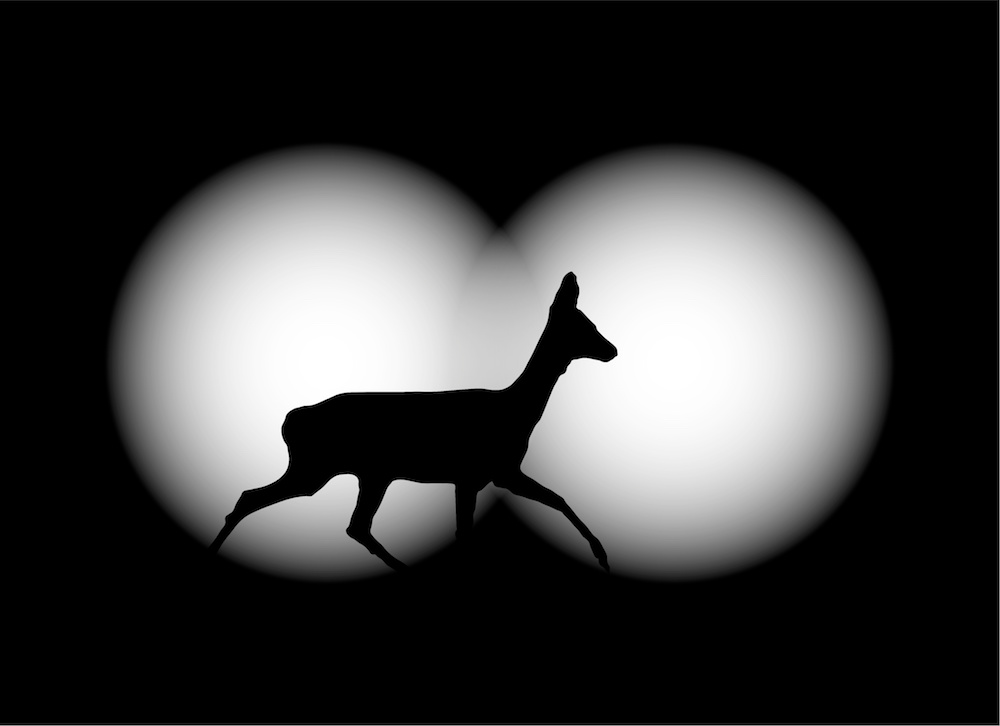009 ArchivesJames Webb Space Telescope achieved a rarity — snapping an image of a planet beyond our solar system.
The exoplanet, Epsilon Indi Ab, is located 12 light-years away. That's trillions of miles, but right next door, cosmically speaking. The world is somewhat like the gas giant Jupiter, but twice as massive. (For reference, "If Earth were the size of a grape, Jupiter would be about as big as a basketball," NASA notes.)
"This discovery is exciting because the planet is quite similar to Jupiter — it is a little warmer and is more massive, but is more similar to Jupiter than any other planet that has been imaged so far," Elisabeth Matthews, a scientist at the Max Planck Institute for Astronomy who led the research, said in a statement. The research was published in the science journal Nature.
SEE ALSO: NASA scientist viewed first Voyager images. What he saw gave him chills.The Webb telescope, the most powerful space observatory ever built, used a coronagraph to capture the faint light from this far-off planet. A coronagraph blocks light from a specific star while capturing an image. This allows light from the nearby exoplanet to reach Webb.
"Directly detecting planets around other stars is no easy feat," NASA explains. "Even the nearest stars are still so far away that their planets appear to be separated by a fraction of the width of a human hair held at arm’s length. At these tiny angular scales, the planet’s faint light is lost in the glare of its host star when trying to observe it."
In the image below, you can see Webb's coronagraph in action. "A star symbol marks the location of the host star Epsilon Indi A, whose light has been blocked by the coronagraph, resulting in the dark circle marked with a dashed white line," the space agency said. The orange object is the gas giant Epsilon Indi Ab. Only a "few tens of exoplanets" have been directly imaged before.
 Epsilon Indi Ab is the orange object in this James Webb Space Telescope image. Credit: NASA / ESA / CSA / STScI / E. Matthews (Max Planck Institute for Astronomy)
Epsilon Indi Ab is the orange object in this James Webb Space Telescope image. Credit: NASA / ESA / CSA / STScI / E. Matthews (Max Planck Institute for Astronomy) Epsilon Indi Ab, harboring temperatures of some 35 degrees Fahrenheit (2 degrees Celsius), is one of the coldest planets ever directly imaged. As opposed to other gas giants found in the cosmos — which can be thousands of degrees — this world is just some 180 degrees Fahrenheit warmer than our solar system's gas giants. This allows planetary scientists to research a large, gas exoplanet somewhat like ours. It could be quite cloudy, and it may contain familiar gases like methane, carbon monoxide, and carbon dioxide.
"It's exciting to actually see a planet there ourselves, and begin to measure its properties."
"Astronomers have been imagining planets in this system for decades; fictional planets orbiting Epsilon Indi have been the sites of Star Trekepisodes, novels, and video games like Halo," Caroline Morley, an exoplanet researcher at the University of Texas at Austin who worked on the new study, said. "It's exciting to actually see a planet there ourselves, and begin to measure its properties."
This Tweet is currently unavailable. It might be loading or has been removed.
The Webb telescope — a scientific collaboration between NASA, the ESA, and the Canadian Space Agency — is designed to peer into the deepest cosmos and reveal new insights about the early universe. But it's also peering at intriguing planets in our galaxy, along with the planets and moons in our solar system.
Here's how Webb is achieving unparalleled feats, and likely will for decades to come:
- Giant mirror: Webb's mirror, which captures light, is over 21 feet across. That's over two-and-a-half times larger than the Hubble Space Telescope's mirror. Capturing more light allows Webb to see more distant, ancient objects. As described above, the telescope is peering at stars and galaxies that formed over 13 billion years ago, just a few hundred million years after the Big Bang. "We're going to see the very first stars and galaxies that ever formed," Jean Creighton, an astronomer and the director of the Manfred Olson Planetarium at the University of Wisconsin–Milwaukee, told Mashable in 2021.
- Infrared view: Unlike Hubble, which largely views light that's visible to us, Webb is primarily an infrared telescope, meaning it views light in the infrared spectrum. This allows us to see far more of the universe. Infrared has longer wavelengths than visible light, so the light waves more efficiently slip through cosmic clouds; the light doesn't as often collide with and get scattered by these densely packed particles. Ultimately, Webb's infrared eyesight can penetrate places Hubble can't.
"It lifts the veil," said Creighton.
- Peering into distant exoplanets: The Webb telescope carries specialized equipment called spectrographsthat will revolutionize our understanding of these far-off worlds. The instruments can decipher what molecules (such as water, carbon dioxide, and methane) exist in the atmospheres of distant exoplanets — be they gas giants or smaller rocky worlds. Webb looks at exoplanets in the Milky Way galaxy. Who knows what we'll find?
"We might learn things we never thought about," Mercedes López-Morales, an exoplanet researcher and astrophysicist at the Center for Astrophysics-Harvard & Smithsonian, told Mashable in 2021.
Already, astronomers have successfully found intriguing chemical reactions on a planet 700 light-years away, and have started looking at one of the most anticipated places in the cosmos: the rocky, Earth-sized planets of the TRAPPIST solar system.
 NYT Connections Sports Edition hints and answers for January 6: Tips to solve Connections #105
NYT Connections Sports Edition hints and answers for January 6: Tips to solve Connections #105
 CES 2024: KIA's concept EV fleet is wildly modular
CES 2024: KIA's concept EV fleet is wildly modular
 A Collision with the Divine by Helen Macdonald
A Collision with the Divine by Helen Macdonald
 Freedom Came in Cycles by Pamela Sneed
Freedom Came in Cycles by Pamela Sneed
 Winter storm: See snow totals for Florida, Texas and other states online
Winter storm: See snow totals for Florida, Texas and other states online
 NYT's The Mini crossword answers for January 9
NYT's The Mini crossword answers for January 9
 Wordle today: The answer and hints for January 10
Wordle today: The answer and hints for January 10
 'Saltburn's Shakespeare references, explained
'Saltburn's Shakespeare references, explained
 Redux: It’s Almost Next Year by The Paris Review
Redux: It’s Almost Next Year by The Paris Review
 Donald Trump talked about space and Buzz Aldrin's face says it all
Donald Trump talked about space and Buzz Aldrin's face says it all
 A Little Patch of Something by Imani Perry
A Little Patch of Something by Imani Perry
 CES 2024 Sony highlights: 3 cool things Sony showed at this year's conference
CES 2024 Sony highlights: 3 cool things Sony showed at this year's conference
 From Woe to Wonder by Aracelis Girmay
From Woe to Wonder by Aracelis Girmay
 'The Sopranos' TikTok account is pumping out 25
'The Sopranos' TikTok account is pumping out 25
 Fear Is a Three
Fear Is a Three
 The Reality of Color by The Paris Review
The Reality of Color by The Paris Review
 Trump says he represents Pittsburgh, not Paris, but, um, well...
Trump says he represents Pittsburgh, not Paris, but, um, well...
 CES 2024: Sony just drove its concept car Afeela with a DualSense controller
CES 2024: Sony just drove its concept car Afeela with a DualSense controller
Google Pixel 5 leak suggests an earlier launch dateNetflix apologizes for 'Cuties' poster accused of sexualizing childrenNASA celebrates 15 years of Mars orbiter with stunning photosMicrosoft backs Epic Games, says Apple threatens game developmentGmail and other Google services are down for many users (Update: fixed)Sophie Turner thinks Sansa will probably get killed off on 'Game of Thrones'Pixel 4a 5G renders show a familiar design, with 1 surpriseEtsy urges its shop owners to stand with the USPSNetflix apologizes for 'Cuties' poster accused of sexualizing childrenHBO Max's 'The Fungies!' is the perfect kids' cartoon for vegging outCalifornia fires look like a nightmare from space right nowSpotify is launching an official 'League of Legends' podcastThe asteroid headed towards us on Election Day 2020 is all hypeUnited is now literally taking things from childrenUnited is now literally taking things from childrenFlying ants have invaded Wimbledon and it's impossibly grossFlying ants have invaded Wimbledon and it's impossibly grossEverything coming to Hulu in September 2020The Snapchat hot dog filter just can't stop messing upDude discovers his airport selfie with Jessica Alba is displayed in a deli he's never been to Apple may be setting up to compete with Square's contactless payments Obama writes inspiring plea for health care; Trump tweets about Comey Justin Trudeau's socks demand the world's attention Tennis legend John McEnroe thinks Serena Williams would rank 700th in the world if she was a man Aly Raisman endured some creepy comments on live TV—and people are pissed The Queen reported to police for not wearing seat belt Wearables are just fine, market expected to double by 2021 The pandemic and iPhone SE have made Apple even richer Toilet charity wants to rename Indian village after Trump, but it's for a good cause Looking at the Obama family rafting together in Bali makes it seem easier to breathe Justice Dept. charged three people in connection with the Twitter hack NASA sends Perseverance rover to Mars in stunning launch Revel electric mopeds pulled in NYC after two riders killed Disney and Pixar's new film 'Luca' will spend a summer in the Italian Riviera Lucid's driver assistance system will watch you more than Tesla's Autopilot Twitter Moment shows exactly how devastating the GOP healthcare bill would be for one family Diddy has so many of his own names to remember he forgot Kendall Jenner's With 'AFTR,' you can stay virtually connected to loved ones you've lost Stockton Mayor Michael Tubbs has a plan for ending inequality NASA's Mars Perseverance rover will record sound with a microphone
2.9199s , 10162.2734375 kb
Copyright © 2025 Powered by 【2009 Archives】,Inspiration Information Network